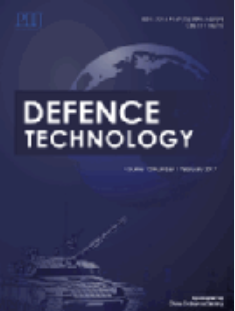Study of the explosion load characteristics and structural response law under a cabin water mist environment: Experimental tests and simulations
IF 5
Q1 ENGINEERING, MULTIDISCIPLINARY
引用次数: 0
Abstract
To investigate the explosion load characteristics and structural response law in a water mist environment in a cabin, explosion experiments are carried out. The weakening rates of the initial peak overpressure, quasistatic pressure and structural residual deflection increase with increasing working pressure of the water mist nozzle. Specifically, the weakening rate of the initial peak overpressure ranges from 7.8% to 31.0%, the quasistatic pressure weakening rate ranges from 29.2% to 41.0%, and the weakening rate of the center of the plate residual deflection ranges from 10.8% to 34.4% under the various working pressures of the nozzles. To further explore the effect of water mist explosion suppression, a method for three-dimensional numerical simulations of water mist weakening the explosion shock wave is established to explore the explosion load characteristics of the compartment and the bulkhead response law. On the basis of the dimension analysis method, empirical formulas are derived to predict the residual deflection thickness in the center of the bulkheads. These findings provide the fundamental basis for the application of water mist in anti-explosive protection.
舱室水雾环境下爆炸载荷特性及结构响应规律研究:试验与模拟
为了研究水雾环境下舱室结构的爆炸载荷特性和响应规律,进行了爆炸试验。初始峰值超压、准静态压力和结构残余挠度的减弱速率随水雾喷嘴工作压力的增大而增大。具体而言,在不同的喷嘴工作压力下,初始峰值超压减弱率为7.8% ~ 31.0%,准静态压力减弱率为29.2% ~ 41.0%,板材残余挠度中心减弱率为10.8% ~ 34.4%。为了进一步探索水雾抑制爆炸的效果,建立了水雾减弱爆炸冲击波的三维数值模拟方法,探讨了舱室的爆炸载荷特性和舱壁响应规律。在量纲分析方法的基础上,导出了预测舱壁中心残余挠度厚度的经验公式。这些研究结果为水雾在防爆防护中的应用提供了基础依据。
本文章由计算机程序翻译,如有差异,请以英文原文为准。
求助全文
约1分钟内获得全文
求助全文
来源期刊

Defence Technology(防务技术)
Mechanical Engineering, Control and Systems Engineering, Industrial and Manufacturing Engineering
CiteScore
8.70
自引率
0.00%
发文量
728
审稿时长
25 days
期刊介绍:
Defence Technology, a peer reviewed journal, is published monthly and aims to become the best international academic exchange platform for the research related to defence technology. It publishes original research papers having direct bearing on defence, with a balanced coverage on analytical, experimental, numerical simulation and applied investigations. It covers various disciplines of science, technology and engineering.
 求助内容:
求助内容: 应助结果提醒方式:
应助结果提醒方式:


